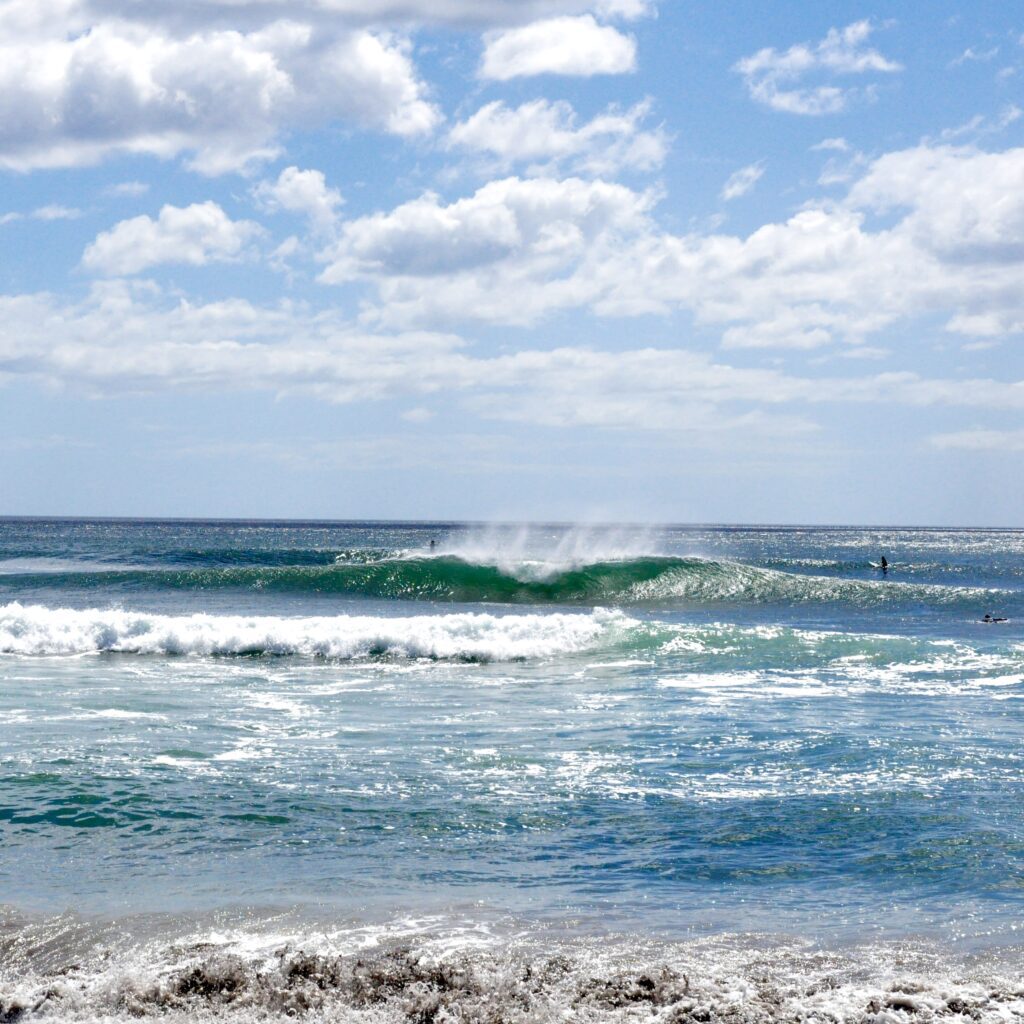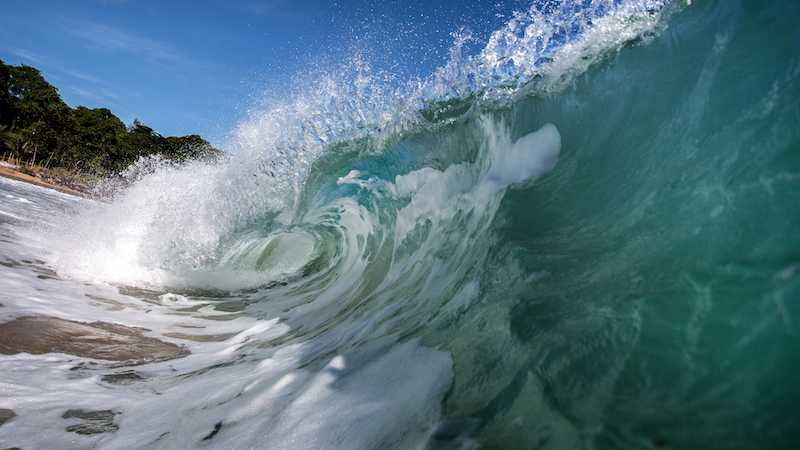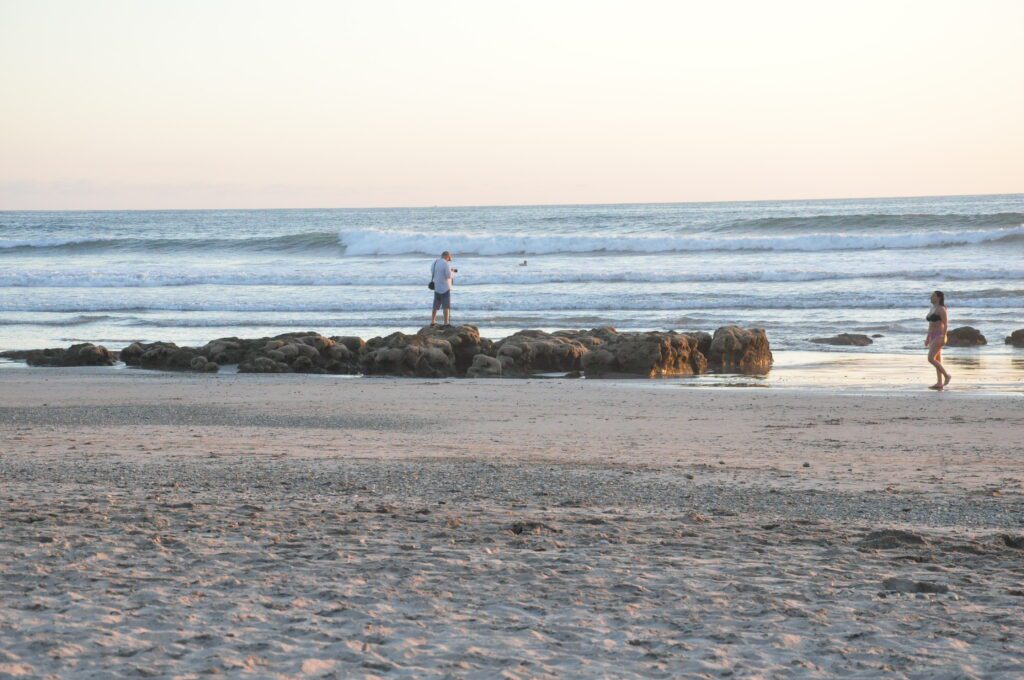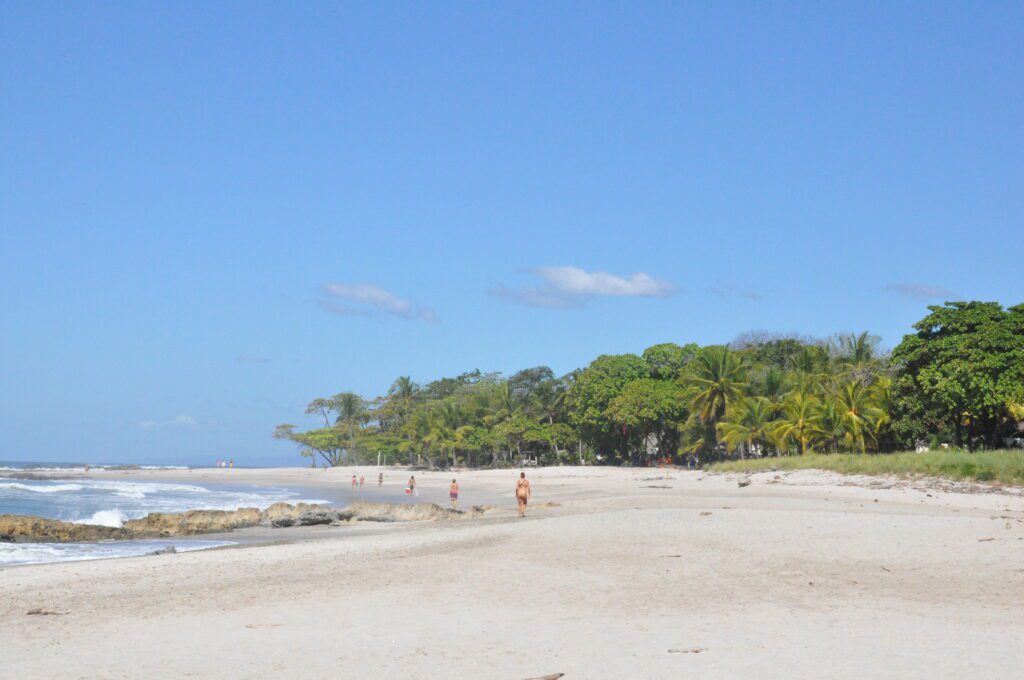Endless points, perfect beach breaks, cheap living and tropical climes… If that sounds like a bit of you, you’re in luck. Central America has all of it in abundance. The slither of land connecting the Americas has drawn surfers for decades.
But with so much coastline, unstable politics, and a reputation for danger, choosing the best place to surf in Central America is tricky. There are countless spots to choose from, and online horror stories often leave you wondering if it’s all that. Hint, it is.
But if you’re planning a surf trip to Central America, here’s everything you need to know. We have a heap to get through, so let’s dive in.
Table of Contents
Central America Surf Season
Central America has waves year-round, but many don’t know there are incredible waves on both sides of the subcontinent. Yep, that’s right, even the Caribbean has amazing waves on its day. You just gotta time it right.
On the Pacific coast, most surfing happens in Central America; the best surf season runs from April to October when large south swells track toward the coast from the deep South Pacific. Over in the Caribbean, the best surf season is in January. This is when the biggest waves light up spots such as Bocas Del Toro and Puerto Viejo.
Best Surf Destinations in Central America
The best surf destinations in Central America are no secret, and the waves across the region are world-class, consistent, and tropical. Here’s a breakdown of the best spots.
Costa Rica
As a world-class surf destination, Costa Rica is well-established; the nation has tempted surfers for decades with beautiful waves, tropical waters, and affordable living costs back in the day. While the influx of surfers and tourists has changed Costa Rica significantly in recent years, skyrocketing living costs in the process, the waves remain the same beautiful creases of water they were years ago.
Best Season to Surf in Costa Rica
Costa Rica is one of the lucky Central American nations with waves on both coasts. The Pacific has waves year-round, with the biggest swells hitting between April and October. On the Caribbean side, while less consistent, the waves pump. The best time of year to surf here is January to March.
Best Surf Spots in Costa Rica
Pavones
There are countless fantastic surf spots in Costa Rica. Starting in the south, you have Pavones, a flawless, super long, playful left-hander– the stuff of dreams. While there’s not much else to do, it’s a fantastic place to immerse yourself into some tropical eat, sleep, surf, repeat style paradise. Check out the full guide to surfing in Pavones.
Dominical
Northward you have the laid-back beach town of Dominical, a long stretch of black sand with punchy peaks the length of it. The town is super chill, and again, not heaps to do other than check out the beach and surf all day! Learn more about surfing in Dominical.
Jaco
Further north is Jaco, pronounced “Hacko”, a large town with hundreds of hostels and luxury accommodations. Compared to Costa Rica’s natural beauty, the city is tacky, but the surrounding beaches are anything but.
Close by is the famous Manuel Antonio National Park and the epic Playa Hermosa, a thumping hollow beachie to humble even the most experienced riders. The main beach in Jaco is also a great beginner-friendly option.
The main beach in Jaco is also one of the best beginner surf spots in Costa Rica!
Santa Teresa
On the Nicoya Peninsula, you have Santa Teresa, a great beach town, drawing backpackers and surfers alike. While this is one of the more expensive areas of Costa Rica, the town is alive with epic restaurants, cool bars, and a handful of fun beach breaks. The beach breaks are fun, punchy, and forgiving, offering something for all levels. To learn more about the joint, check out my complete guide to surfing in Santa Teresa.
Puerto Viejo
Surprisingly, Costa Rica also has some excellent surf on the Caribbean side. Puerto Viejo is home to the infamous slab, Salsa Brava, and has some beginner-friendly beach breaks nearby! The town is also a backpacker hub with a lively nightlife scene. Check out my full breakdown of surfing in Puerto Viejo for more information.

Nicaragua
Ahhh, Nicaragua, Costa Rica’s lesser-known, more affordable neighbor. While the country has endured its share of political troubles and hardship over the past few decades, the waves throughout the country are excellent. You’ve seen the pictures, right? You know those blue-green A-frames breaking meters from the shore? Yep, that’s Nicaragua.
But what many people don’t know is Nicaragua has every type of wave you can imagine. From beginner-friendly beach break peaks to heavy shore breaks, A-frame reefs, and even a few outer reef bombies.
Best Season to Surf Nicaragua
Nicaragua enjoys its best surf between April and October; this is the wet season when large south swells reach the coast from the South Pacific. The waves during this period are incredibly consistent, rarely dipping below 2ft and hardly ever exceeding 4-6ft. In the dry season, you can also score super fun waves, but the only time to avoid surfing in Nicaragua is during February, especially in the south.
Because of Lake Nicaragua, the wind is always offshore in the south of Nicaragua, but in February, these winds get crazy strong, creating wind chops coming up the face, making it tricky to surf. Additionally, the water is surprisingly cold in Feb; too cold to surf in boardies–yep, this shocked me too!
Best Surf Spots in Nicaragua
Nicaragua has countless surf spots, but the best and most well-known spots are in Popoyo or Aposentillo. Popoyo is the center of surfing in Nicaragua and has excellent waves for all abilities. While there’s not much to the town, just a collection of dusty streets and a few surf spots scattered around it, if you’re coming to surf and do nothing else, Popoyo is your spot.
Popoyo
Popoyo is offshore almost 350 days per year and remains strong enough to prevent the mid-day onshores from coming up, which is the norm elsewhere in the tropics. Playa Colorado is the area’s main attraction for advanced surfers; the stretch of beach produces 3-4ft dreamy A-frame barrels on the right day.
Closer to town is the peak which is a super fun A-frame peak with a long wally left and shorter punchy right. Being the premier wave in the area, it gets super crowded, but it’s perfect for intermediate to advanced surfers. Out from the peak lies Popoyo outer reef is a harrowing, powerful left slab, which on the largest swells, breathes to life into a heavy shallow left slab.
Hollow beach breaks and scary outer reefs aside, Popoyo has a spot custom-made for the beginner surfer. Beginner Bay is a beautiful crescent-shaped beach with perfect mushy whitewater to learn and one of the best beginner surf spots in Nicaragua. Here’s everything you need to know for surfing in Popoyo.
Aposentillo
The next most renowned surf town is in Northern Nicaragua, just before Honduras. While getting to Aposentillo is a mission requiring a combination of buses and taxis, you’ll pass several volcanoes and some excellent epic scenery along the way. Aposentillo is tiny, and there isn’t much to do here, just dusty streets, a handful of accommodations, and one or two shops. But turn your attention seaward, and things get more interesting.
The Boom, a flawless A-frame barrel breaking meters from the sand, is the best wave in the area. There is also a perfect beachie for beginners, with a couple of hostels perched overlooking it, facing directly into the sunset. Around the coast, there are several reef breaks and beachies to sample if you get bored of the Boom! Read more about surfing in Northern Nicaragua.

Panama
If Costa Rica and Nicaragua needed a rival for the title of best surf destination in Central America, Panama would be it. The country has several world-class waves on both the Pacific and Caribbean coasts. Another affordable, tropical Central American nation with a whole host of non-surfing activities to do.
Best Surf Season in Panama
Panama has two distinct surf seasons depending on the coast you’re on. On the Pacific side, the best waves are between April and October. On the Caribbean side, the season is from January to March. Oddly, the Caribbean coast has some of the best waves in Panama, most of which are around the famous Bocas Del Toro.
Best Surf Spots in Panama
Santa Catalina
While there are many lesser-known spots for surfing in Panama, the most popular are Santa Catalina on the Pacific and Bocas Del Toro in the Caribbean. Santa Catalina is peninsular with several epic surf spots; the perfect spot if you want consistent surf and variety in your spot choices.
Bocas Del Toro
Bocas Del Toro is a collection of tropical islands with reef breaks, a perfect hollow beach break, and even a mutant death slab. While not as consistent as the Pacific coastline, Bocas has word class waves on the right swell.
Whether you’re a beginner looking to sample the perfect peeling lefts of Carineiros, an advanced surfer hunting barrels, or a madman looking to charge Silverbacks, Bocas has it all. Check out the complete guide to surfing in Bocas Del Toro.

El Salvador
If you’re a fan of perfect tropical rights and affordable living costs, El Salvador is calling you. The country has skyrocketed in popularity as a surf destination in recent years, with the government marketing the place as “Surf City”, and the world-class Punta Roca hosted the Championship Tour for the first time in 2022.
El Salvador perfectly combines the cost of living, easy-to-surf waves, tropical climate, and relaxed vibe. While the nation is renowned for danger and drug crime, surf towns such as El Tunco and Las Flores are anything but.
Best time to Surf in El Salvador
El Salvador enjoys waves all year, but during the wet season (April- October), the waves are most consistent, with swell hovering around the 3-4ft mark and occasionally pushing 4-6ft.
Best Surf Spots in El Salvador
The main surf town is El Tunco, famous for the long peeling walls of El Sunzal, a longboarder’s dream, and of course, the amazing Punta Roca. El Tunco is a fun backpacker town with two waves out front.
La Bocana is a fun A-frame peak, breaking over cobblestones, whereas Sunzal is a long peeling right, perfectly producing seemingly endless walls for intermediate and advanced surfers. Perfect for practicing cutbacks.
Ten minutes down the road, Punta Roca is a super long, quick right, which on its day is one of the best waves on the planet. You’ll be hard-pushed to surf anywhere, which is more fun, especially as a regular footer. Picture JBay, but add 20 degrees and remove the sharks. Check out my full guide on surfing in El Salvador to learn more about the area.
Guatemala
While less popular for surfing in Central America, and frankly, While the nation doesn’t have world-class options like its neighbors Mexico and El Salvador, this doesn’t mean you shouldn’t go. The country boasts long stretches of consistent beach break waves and epic non-surfing activities. Check out the Acatenango Volcano hike. I don’t stray from the Ocean much, but this was one of the best things I’ve ever done. No exaggeration.
Best Time of Year to Surf in Guatemala
Unlike other spots in Central America, the best time to surf in Guatemala is outside of the wet season. This is because the main surf town, El Paredon, is a long, exposed beach that doesn’t handle heaps of swell. But outside of this season, when swells subside, and South Pacific is calmer, the waves here can get super fun. A frame peaks breaking over a black sand beach, and there’ll be minimal crowds!
Best Surf Spots in Guatemala
By far, the best surf in Guatemala is in El Paredon. The town is nothing more than dusty tracks and a long stretch of black sand beach. That said, there are some wicked hostels in the area, and the beach does produce some super fun waves on the right day. If you’re looking for a laid-back place to chill, enjoy the tropics, and do a little surfing, El Paredon is worth checking out. Check out my full breakdown of surfing in El Paredon.
Tips for Surfing in Central America
The Heat
As you’d expect, it’s crazy hot in Central America. Temperatures rarely drop below 30c, and unless you’re surfing early in the morning, you won’t feel even the slightest cold. It’s swelteringly hot by 10-11 am, so ensure you get your zinc on even if you’re surfing early doors.
For midday sessions, you can avoid them as the wind is often onshore anyway, and the sun is harshest. However, if you’ve got a good rash/sun guard and strong zinc, you can often score fun, albeit messier waves, with fewer crowds at this time. The wind almost always backs off again as temps cool down in the evenings, drawing back the crowds and bringing back the clean conditions.
Localism
Like anywhere, surfing in Central America comes with its fair share of localism. Some of the worst localism I’ve ever seen happened in Panama. (read more about this story in my upcoming book, Latin American Surf Tales). Locals can be aggro and protective over their waves, so if you’re an intermediate/advanced surfer, always respect this; the top locals will be easy to identify!
Costs
Although Central America is a great budget surf trip option, prices are much higher than in countries in Southeast Asia, for example. While in Indonesia and Sri Lanka, you can get by with a few dollars per day, things are more expensive in this part of the world. So yes, it’s a budget destination, but not as cheap as you think.

Non-surfing Activities in Central America
Volcanos
Because Central America is located on the Pacific “Ring of Fire”,; there are hundreds of volcanos in the region. Check out Arenal Volcano in Costa Rica and Acatenango in Guatemala. While you may not head to Guatemala for surf specifically, I’d recommend checking out the Acatenango volcano, a 1.5-day hike, where you can see lava exploding from the opposing El Fuego volcano. A truly once-in-a-lifetime experience.
Beaches
Hanging on the beach goes hand in hand with surfing, and there are countless amazing beaches throughout Central America. While you’ll soak this in from surfing, the beaches are a great draw if you’re trying to convince a non-surfing partner to embark on a Central American surf trip.
Parties
With so many awesome hostels, bars, and clubs in Central America, the party lifestyle in most Central American surf/beach towns is healthy, maybe even too healthy. Towns such as El Tunco, Santa Teresa, and Puerto Escondido are wicked party towns, meaning if the waves go flat or you’re too tired to surf, you certainly won’t get bored.
Snorkelling/Diving
There are some excellent snorkelling and diving locations in Central America. Perfect for breaking up your surfing with something different.

Central America as a Digital Nomad Surf Destination
Because of the area’s massive increase in popularity and more and more people adopting the digital nomad surf lifestyle, the affordable cost of living makes the region a perfect digital nomad surf destination. Because of the increase in popularity, Central America, at least in the most famous surf towns, has all the infrastructure you need to work online. Most large towns will have decent wifi, and many places, such as Santa Teresa and Puerto Escondido, have co-working spaces.
Essential Equipment
- Boardies
- Zinc
- Sunscreen
- Shortboards
- Sun Hat
Final Words
It’s no doubt Central America is one of the world’s best surf destinations; with a collection of countries with perfect waves, tropical weather, and a backpacker vibe, it’s tricky to find a better part of the world to venture through. Central America is also a superb budget surf trip location, meaning you can score as many waves as possible and make your dollars stretch. Check out my other guides for more information on surfing in Central America. (See below).
